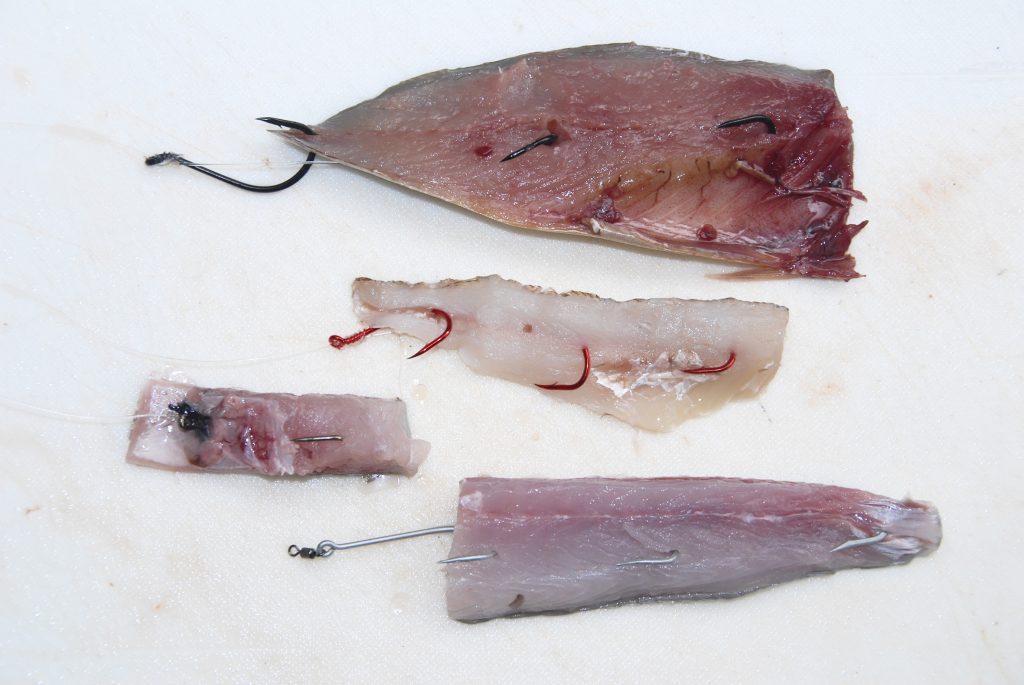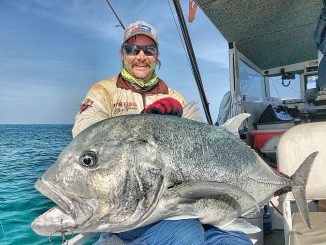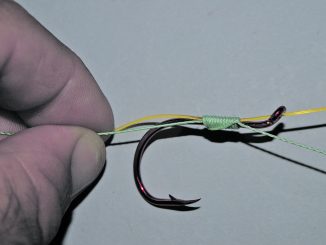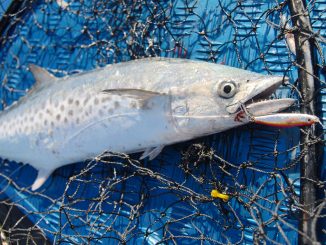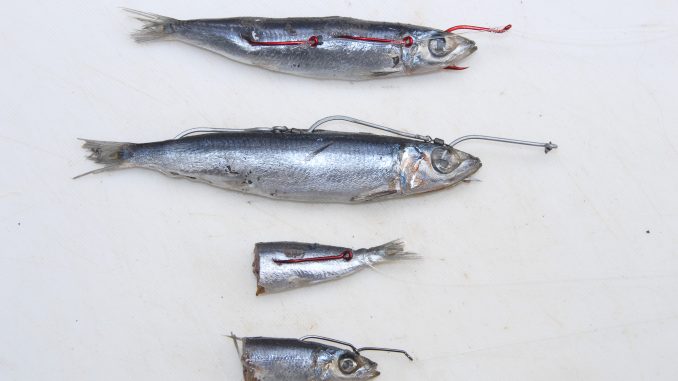
by Gordon Macdonald •
With the cooler months approaching, anglers will notice an increase in the number of snapper, mulloway and several other tasty aquatic species. Many choose to target these on artificial offerings and achieve great success. However, some prefer the more relaxed approach of fishing with baits, a historically proven method.
While some just pin any bait on a random hook, there is no denying that using quality, well-rigged baits will heighten results. This month I am going to look at some of the more popular fish baits used in Moreton Bay and further afield to target quality snapper and mulloway, however, many other species will also be attracted to such offerings. Additionally, we will explore rigging options that offer great presentation and hooking potential. In the May edition I will be going through several more great bait and rig combinations.
Obtaining quality baits is only half the battle when targeting snapper and the like. Presenting them so that they appear natural without spinning in the current will heighten bite potential. Quality rigging is also important for increasing the hook-up rate. You’ll want the hooks unobtrusive, yet well-placed so that they will find the mark when the snapper, mulloway or other species mouths the bait.
Hooks shouldn’t be too large for the bait, they should be fairly well hidden in the bait, yet with the point accessible in the offering. I like a good flexible rig when using multiple hooks and prefer snelled rigs over ganged hook rigs for mulloway and snapper. I like the fish to be able to mouth the bait easily, which sometimes means the bait will bunch up, without them feeling the steel or finding it difficult. However, that said, this is a personal preference and many anglers still manage to catch quality mulloway and snapper on ganged hook rigs. Large single hooks also have a lot of merit in many baits. Let us look at some baits that are ideal for our main target species, plus some rigging options to maximise our chances.
1. PILCHARDS
Probably one of the most readily available baits is the humble pilchard. These are available at virtually any outlet that sells bait, however quality can vary. They’re a rather oily and relatively soft bait, therefore good rigging is essential to increase hook-up opportunity and keep the bait on the hook.
Many anglers present pilchards on ganged hooks. If you do, inserting the hooks down through the back centrally is ideal as it allows the pilchard to waft in the current with the majority of the hook’s gape through the tougher back section and the points in the soft belly area. With the leading hook centrally through the top of the head, just in front of the eyes, this bait will withstand quite strong current without spinning.
For a whole pilchard targeted at species without razor sharp dentures, I recommend the snelled hook rig, as it offers good flexibility and purchase on the bait. I use ganged hooks when fishing pilchards for mackerel as they are a snatch and run merchant, not mouthing the bait tentatively like snapper and mulloway can. The flexibility of the snelled rig means that the bait can be mouthed, crushed and swallowed with little difficulty.
For cut pieces of pilchard you can use a smaller two hook ganged rig, however, I prefer a slightly larger single hook (usually a suicide pattern). With this single hook rig, adding a few half hitches of the leader around the tail will help secure and present the bait. If using the head half with a single hook, push the hook through the pilchard’s eye socket until the leader is passing through it. Insert the hook into the meaty back section to hold it more securely. Salted pilchards are tougher and will hold onto the hook better, however, they will require some extra preparation. I previously did an article on this in the April 2017 edition of QFM.
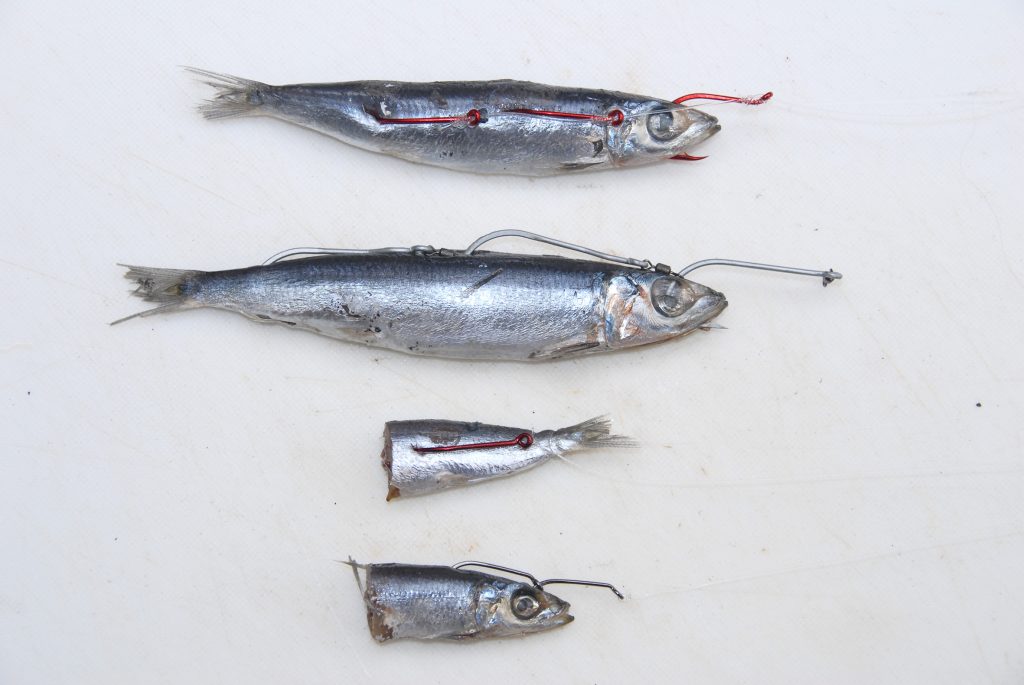
2. WHOLE FISH
Snapper and mulloway have quite an appetite, readily eating a wide array of whole fish including mullet, garfish, yakkas, slimy mackerel, pike, diver whiting and numerous others. Obviously live offerings are the best option, however, that would be an entirely different article with different rigging options.
Whole dead fish are best when fresh, but previously frozen offerings will still attract plenty of bites. Due to their size, for rigging whole fish there are two main rigging options – the snelled hook rig and ganged hooks. However, some may still prefer a large single hook. As stated previously, I think that the flexibility of a snelled rig is better than the stiffer ganged hook rig for snapper, mulloway and the like. Snelled rigs commonly consist of two or three hooks, however, on long thin baits such as gar and pike, sometimes more hooks are used to adequately cover the bait.
With larger, whole fish baits, many believe in rigging the bait with the bottom hook in the head of the bait (opposite way round to shown here), as snapper and mulloway commonly eat bait head first, because it is easier to swallow that way. This is a good option when there is little current, however, I think that a bait dragging backwards in current looks unnatural as it is more likely to spin in faster flowing water. Using baits that are common in the area where you fish is highly recommended. Diver whiting are a popular Bay bait option as a result, but a broad array of whole fish baits can be used successfully. Just ensure to use a hook that is big enough so that the points are still exposed once it is inserted in the bait.
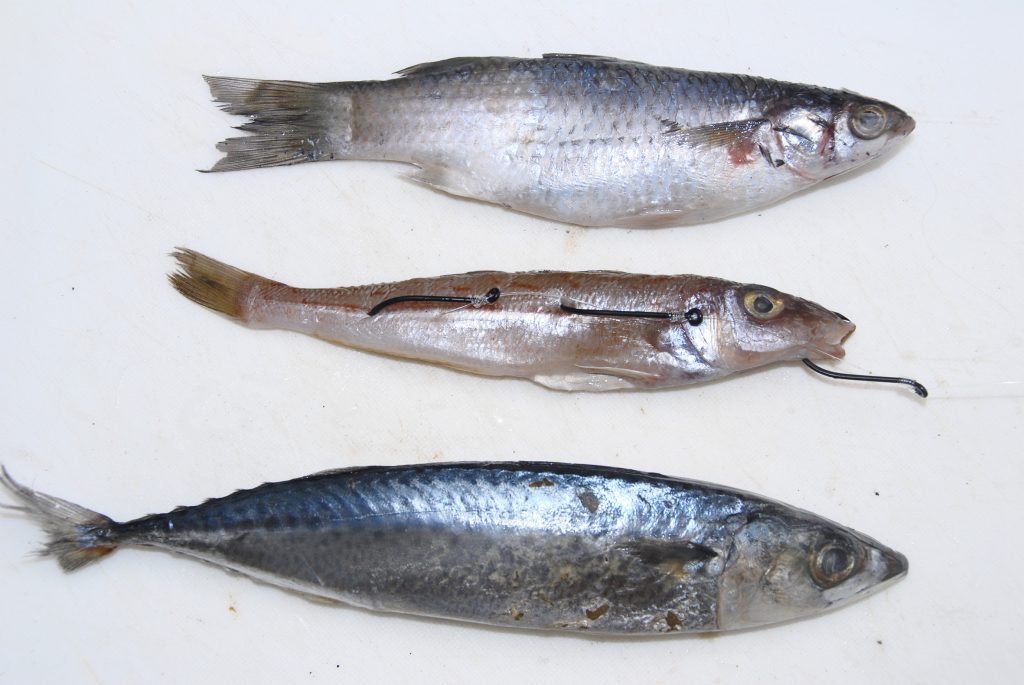
3. FILLETED AND BUTTERFLIED
With some whole fish baits, anglers will remove one fillet, totally fillet leaving just the head and frame, or cut out the spine and tail to leave two fillets flailing (butterflied). Doing this will increase flexibility of the bait without decreasing the profile of it too much. This will make it easier for the fish to mouth.
A gun bait in the Bay is the diver whiting frame. Many will fillet their diver (trumpeter) whiting while on the water due to the fact that they have no minimum size limit. Once filleted, you are simply left with the head, spine and tail of a whiting. Many use these for snapper bait, starting a berley trail of heads and frames and then feeding an unweighted head/frame down with a large, single short-shanked hook in the head. Just play out the line until the bait gets eaten, engage the reel and hang on.
Another useful offering, which can be deployed into a berley trail or just dropped to the bottom, is a head with just one fillet left attached for a bit of taste and enticement. This produces a large profiled bait with plenty of flavour, ideal for large specimens. For this I recommend a snelled hook rig with the top hook up through the mouth of the fish to keep it closed, minimising spinning in the current.
The butterflied fish (in the middle of the image) is fairly similar, except both fillets are left on. Many will fish this with a large single hook inserted through the head or attached to the top of the head with a rubber band or waxed thread passed through the eye slot. This bait will have a lot of movement in current and is second only to a live bait for large predators. Large, succulent baits like these are great for attracting the XOS snapper and mulloway. The pickers will still have plenty to chew on and it will give that big, wary knobby lurking on the fringe time to find and inspect the offering.
The particles released from the aggression of the smaller fish will act as a berley until the big knobby can’t resist any longer. Large baits like this are also ideal for mulloway. Being a lot softer than a fish with backbone intact, the mulloway can mouth them easier, increasing hook-up potential.
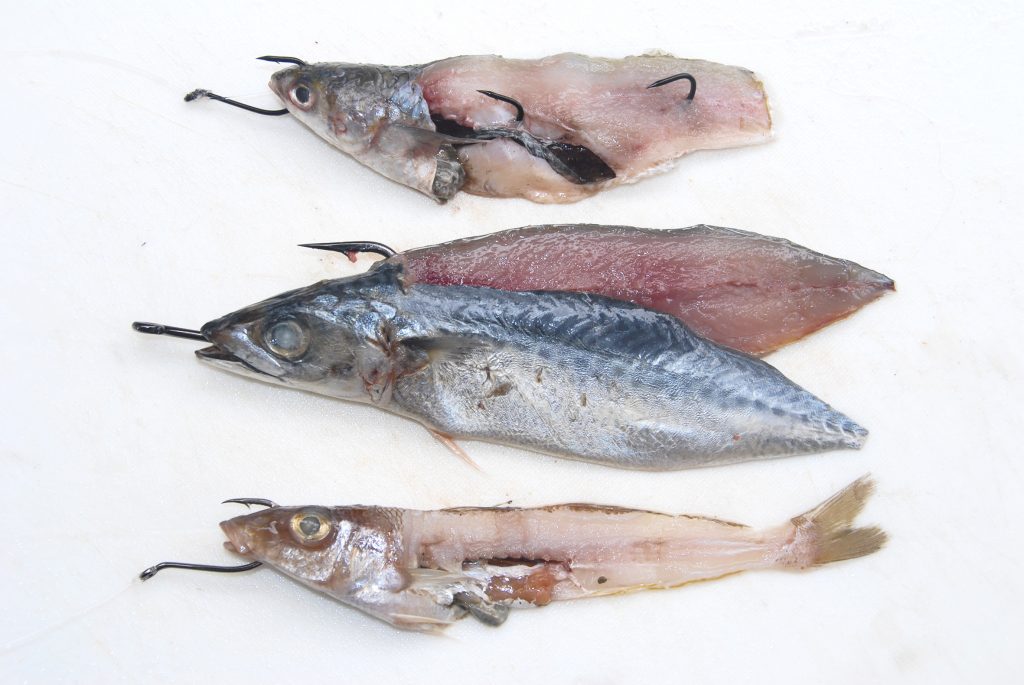
4. BONITO and TUNA
Pelagic species such as bonito and tuna possess a lot of natural oil in the flesh and skin, which makes them flavoursome baits. Fillets from freshly caught specimens make ideal baits with heaps of blood and oil to leach out. However, once frozen, flesh from bonito and tuna will become rather soft, often to the point where chunks of flesh will fall away from the skin. Salting the flesh will toughen it considerably and slow the leaching of these delectable juices to make a long lasting and tasty bait, especially for snapper.
Long thin strips can be fished on a snelled hook rig with the leading hook in the tip of the bait. Smaller portions (like those cut across the fillet) can be fished on a 3/0-6/0 baitholder hook (which has barbs along the back of the hook shank to help with bait presentation). To begin, I usually pass this entire hook (including the eye) through the fillet from the skin side until the leader is passing through the skin/flesh. Next put the point back through the fillet (from the flesh side), then the point back through the skin near the bottom of the bait so the point ends up on the flesh side. This aids in preventing the bait from scrunching up in the hook gape.
With a small, chunky cube of bonito or tuna flesh, a single octopus (suicide) pattern hook is generally the best option. Additionally, an octopus circle pattern or nautilus circle is a good hook option, but only if the rod is being fished from the holder or a situation where the fish is allowed to take off after swallowing the bait. If you strike when using a circle pattern, you will usually pull the hook out of the fish’s mouth. The tension needs to take up slowly with the fish swimming away from your position. With all of these flesh baits, it is recommended that you insert the hook so that the hook point is on the flesh side for presentation and increased hooking potential.

5. FILLET BAITS
Probably one of the more used baits, especially for snapper, is the fillet bait. Fillets can be cut from fish such as garfish, mullet, pike, tailor, mackerel, yakka, slimy mackerel, whiting and almost any other fish you can think of, including those pesky grinners. Some like to use a whole fillet, which gives those larger fish plenty of time to get to the bait before the pickers demolish it.
The most common rig is the three hook snelled rig. These can be pre-made or easily assembled on site, depending on the chosen size of your bait. Fluorocarbon leader with octopus or circle hooks will work a treat. A decent set of ganged hooks can also be used if you prefer. Gangs joined with swivels are better than those ganged eye to eye, due to the increased flexibility and strength. Two or three hook gang rigs are useful and which one you use will depend on bait size and thickness.
Smaller strips of fillet are ideal when targeting those moderate snapper and sweetlip. They can be fished on a large single hook such as a baitholder. The construction attributes of the baitholder hook will help to hold the strip flat, which offers good presentation and hook setting potential. Fresh fillet baits are the best offering, however, frozen isn’t too bad. Softer fillet baits (and pilchards) can be salted to increase durability. I have done articles on salting baits over the years and these can be accessed on the Fishing Monthly website.
Large baits (whole fish, filleted fish, head/frame, butterflied and large fillets) are recommended when searching for those bigger snapper and mulloway, however, if you are happy with just a few legal snapper for the table, then the smaller strip baits and half pilchards are likely to get you more bites.
Next month we will look at other good bait options including squid, prawns, gut, crabs, chicken fillet and others.
